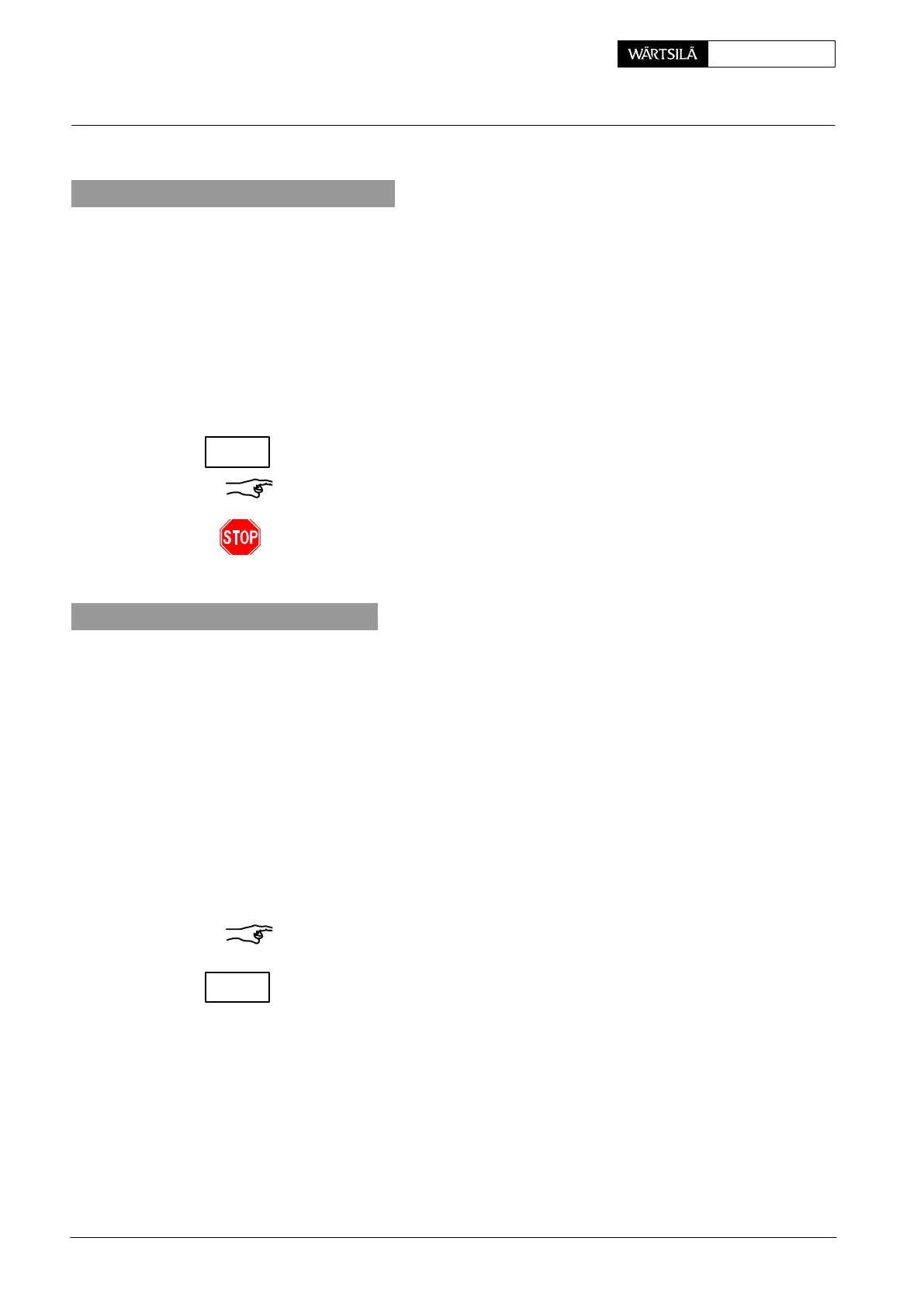Maintenance2722−1/A1 RT-flex50-D
Wärtsilä Switzerland Ltd
4/ 8
4. Dismantling an injection valve
⇒ Screw down the injection valve on support 19 of test bench 94272, as men-
tioned, however without connecting HP hose 20 to the injection valve.
⇒ Remove receiver 21.
⇒ Place the special tool of the test bench onto retaining nut 10 and loosen it with
the press of the test bench.
Note test bench manufacturer’s application instruction!
⇒ Remove retaining nut 10, nozzle tip 7, retaining sleeve 14, nozzle body 13,
nozzle needle 12, intermediate piece 6, tappet 9, compression spring 11 and
shim rings 8.
Examine all parts for their condition.
Remark: If only a nozzle tip 7 has to be replaced, see section 7.
Never interchange nozzle needle 12 and nozzle body 13! Each nozzle needle
belongs to its mated nozzle body into which it has been individually fitted with
greatest precision.
5. Assembling an injection valve
To assemble an injection valve, follow generally the reverse sequence of the dis-
mantling process, but note also the following points:
D To clean injection valve parts, use only clean diesel oil (gas oil) or fresh kero-
sene, and dry compressed air.
D The fitting position of nozzle tip 7, nozzle body 13 and intermediate piece 6 is
given by dowel pins 16, 17 and 18 (Fig. ’B’).
D Apply a thin layer of Never-Seez NSBT-8 to the thread and the seating face of
retaining nut 10.
D Pre-tighten retaining nut 10 to 100 Nm using a torque wrench. Starting from
this position, tighten the retaining nut by a further angle of 30_ by means of the
hydraulic tightening (or loosening) device of the test bench.
Repeat the tightening procedure on the initial assembly.
Remark: An angle of 30_ corresponds to 18.8 mm on the circumference relating to
a nut diameter of 72 mm.
After assembling the injection valve must be checked and judged according to sec-
tions 2 and 3.
2010
Injection Valve: Checking, Dismantling, Assembling and Adjusting
CHECK
CHECK

